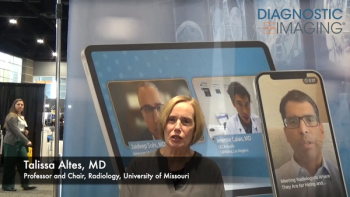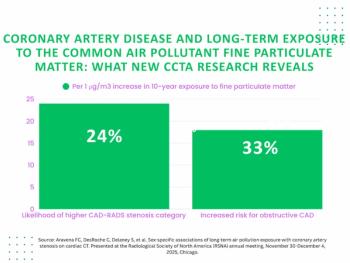
Cost doesn't necessarily shut out PACS in small hospitals
he high cost of PACS has traditionally kept many smaller community hospitals out of the digital market, but that may be changing. Cost is no longer the largest impediment to PACS implementation, according to one PACS administrator. "The trend is for
he high cost of PACS has traditionally kept many smaller community hospitals out of the digital market, but that may be changing. Cost is no longer the largest impediment to PACS implementation, according to one PACS administrator.
"The trend is for hospitals to try to justify the cost of PACS," said Brent J. Liu, Ph.D., director of special projects and PACS administrator at Saint John's Health Center, a 244-bed facility in Santa Monica, CA. "I don't see that as a problem in the future."
Creation of a cost-effective PACS can be achieved using a Unix-based archive server, with Windows NT viewing workstations distributed for reading, according to Liu. He also demonstrated an affordable fault-tolerant PACS controller that essentially yields continuous availability at the RSNA meeting in November.
"With hardware fairly cheap and software so advanced, problems of cost are starting to disappear as hospitals realize they can afford something like this," he said.
At St. John's, Liu found the biggest problem was implementing workflow changes.
"While being a Catholic hospital helps financially, PACS drastically changes the workflow of the institution, in the sense that people throughout the chain - from clerk to technologist to radiologist and clinician - were used to film," Liu said.
Computer devices changed that suddenly. The issues then became training and troubleshooting.
"Some people have never handled a mouse before," he said.
Often, PACS training targets only the radiologist because he or she is the end user, but the staff that handles the input should also be trained.
"If the input is bad or incorrect, how can you read the output?" Liu said.
Liu recommends finding a PACS champion, like an aggressive director of imaging who really buys into PACS, to guide the hospital through the fear barrier. This counters the temptation, when PACS isn't working, to say, "well, let's go back to film."
St. John's, which performs approximately 120,000 imaging studies a year, decided to go digital after the 1994 Northridge earthquake, when the decision was made to replace the old hospital with a new facility and state-of-the-art equipment. Construction of the inpatient facility should be completed by 2002.
Radiology didn't wait.
"We're already about 95% filmless," Liu said.
St. John's is looking at off-site image distribution to physicians in their offices, providing information to the point of decision, which is the referring physician's office.
"If we can promise four- or five-minute turnaround to a patient or clinician, you can see the value added," he said. "That's probably more important than saving an FTE here and film cost there. PACS's primary value is the level of service that increases."
(See the RSNA meeting Webcast article. - http://www.dimag.com/cgi-bin/webcast00/display_news.cgi?33 )
Newsletter
Stay at the forefront of radiology with the Diagnostic Imaging newsletter, delivering the latest news, clinical insights, and imaging advancements for today’s radiologists.




























